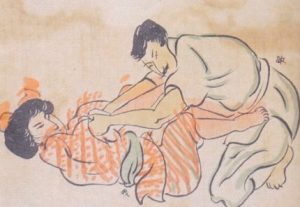- Originally published on the Bartitsu.org site on Tuesday, 23rd January 2018
Just a reminder that the 2011 documentary Bartitsu: The Lost Martial Art of Sherlock Holmes cannot legally be screened at venues such as public libraries, nor at events such as steampunk conferences, martial arts seminars, etc. without the express permission of the producers.
Here’s the Motion Picture Association of America’s advice:
The Federal Copyright Act (Title 17 of the US Code) governs how copyrighted materials, such as movies, may be used. Neither the rental nor the purchase of a copy of a copyrighted work carries with it the right to publicly exhibit the work. No additional license is required to privately view a movie or other copyrighted work with a few friends and family or in certain narrowly defined face-to-face teaching activities. However, bars, restaurants, private clubs, prisons, lodges, factories, summer camps, public libraries, daycare facilities, parks and recreation departments, churches, and non-classroom use at schools and universities are all examples of situations where a public performance license must be obtained. This legal requirement applies regardless of whether an admission fee is charged, whether the institution or organization is commercial or nonprofit, or whether a federal or state agency is involved.
Willful infringement of these rules is a federal crime carrying a maximum sentence of up to five years in jail and/or a $250,000 fine. Even inadvertent infringement is subject to substantial civil damages.
If you wish to arrange a public screening of Bartitsu: The Lost Martial Art of Sherlock Holmes, please contact Tony Wolf via info(at)tonywolfsystem.com for further details.













